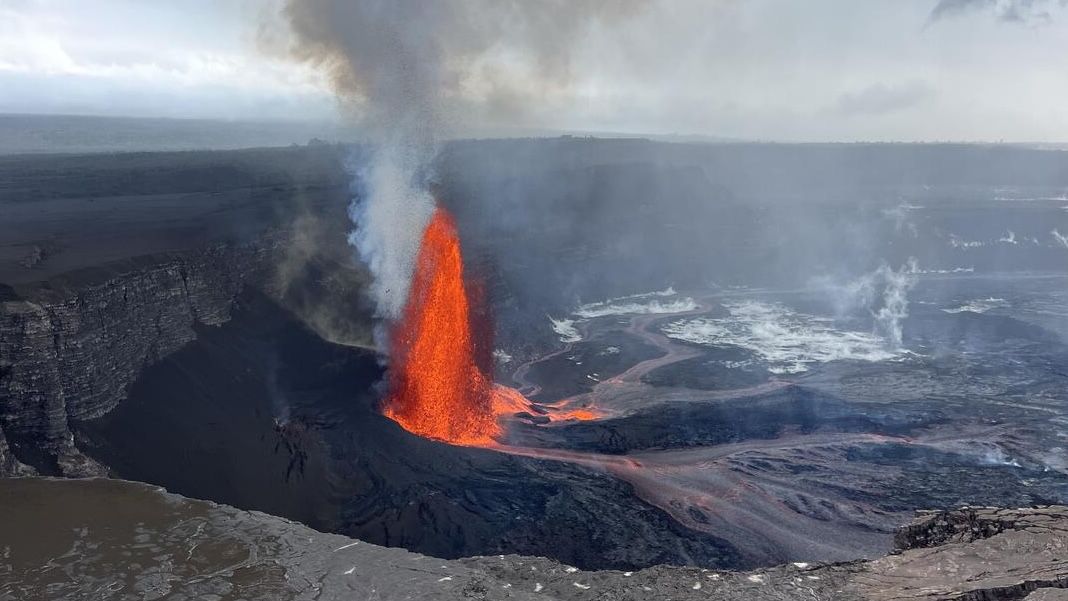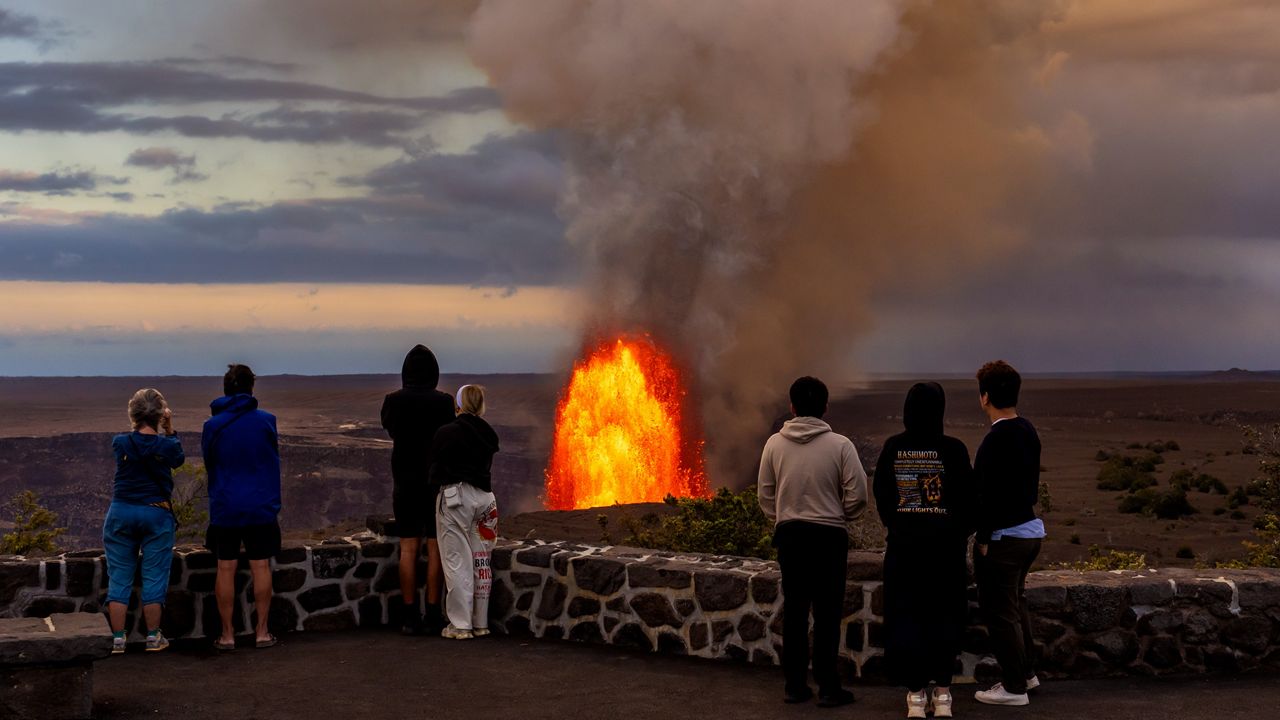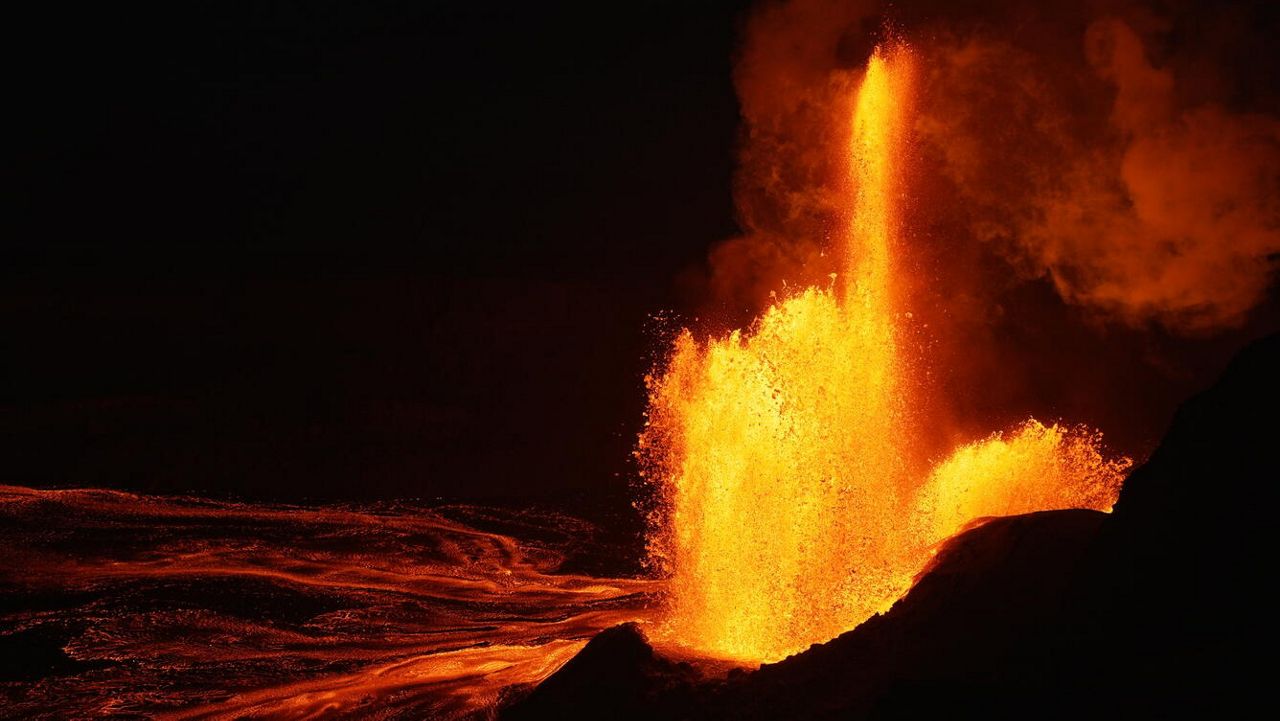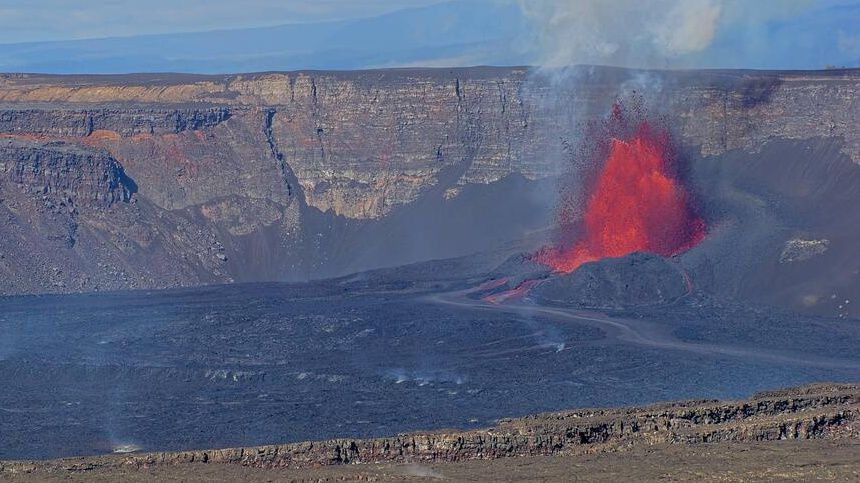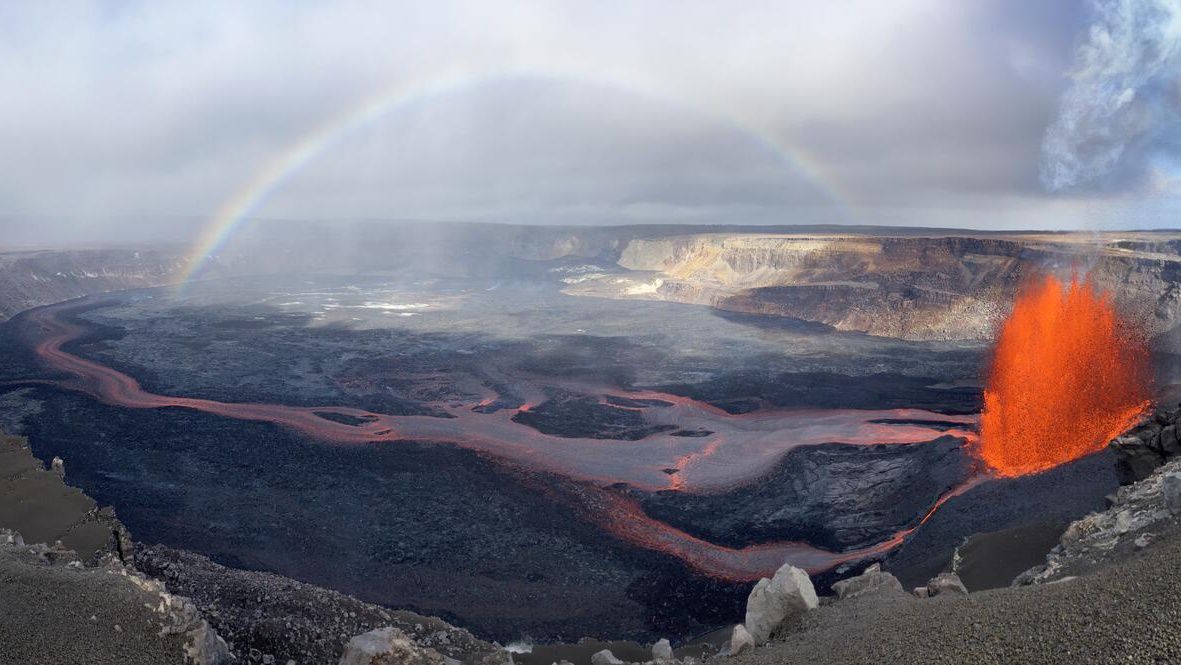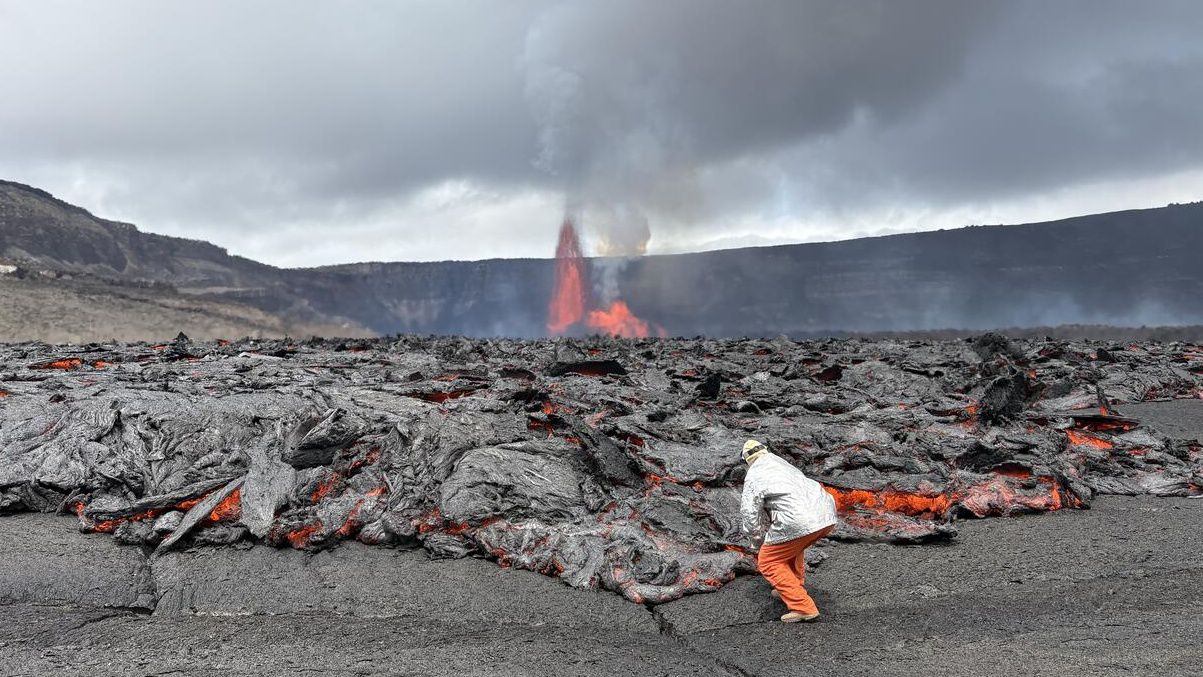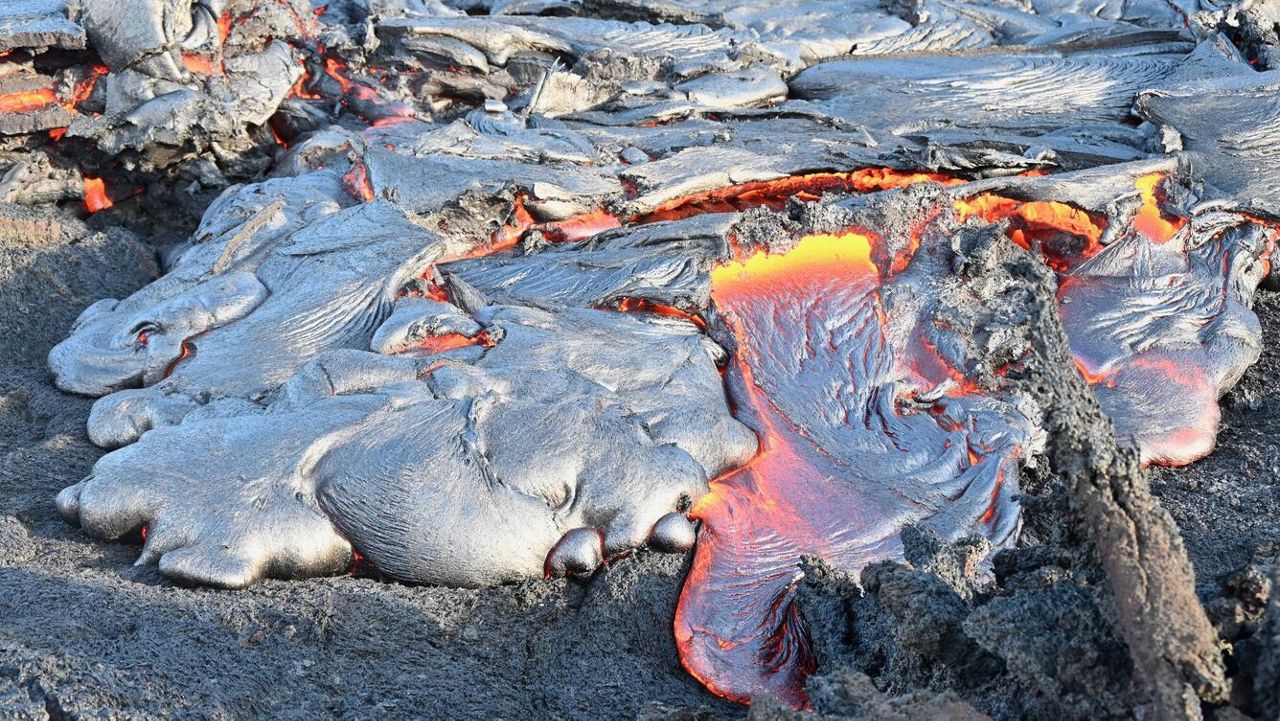The Hawaiian Volcano Observatory reported Kilauea volcano began the main fountaining event of episode 20 on Tuesday at 5:28 p.m. The eruption paused later that day at 9:58 a.m., after 4.5 hours of sustained fountaining.
The current eruption, which began on Dec. 23, 2024, has already produced 19 episodes of lava fountaining, each separated by brief pauses in activity. These spectacular bursts of lava originate from two vents within the Halemaʻumaʻu crater: the north vent and the south vent.
During episode 20, lava fountains and flows erupted from both vents, although the north vent was much more active. Fountains from the north vent reached heights of more than 500 feet, while fountains from the south vent only reached heights of about 65 feet.
Before the sustained fountain phase of episode 20, Kilauea experienced nearly 31 hours of precursory low-level activity that included gas-pistoning events in the north vent that produced low lava dome fountains, overflows, and drainbacks, along with sluggish lava flows from the south vent.
The Hawaiian Volcano Observatory estimated that lava flows from this episode covered less than half of the Halema'um'au crater floor.
The U.S. Geological Survey-operated agency warned that emissions of volcanic gas — a mix of water vapor, carbon dioxide, and sulfur dioxide — are elevated. As sulfur dioxide is released from the eruption, it will react in the atmosphere to create the visible haze known as vog.
Also, the Hawaiian Volcano Observatory noted visitors to Hawaii Volcanoes National Park and residents of nearby areas should watch out for Pele’s hair and other small fragments of volcanic glass and tephra carried in the plume, as they were during previous episodes.


